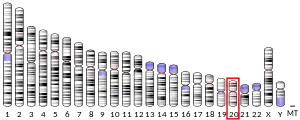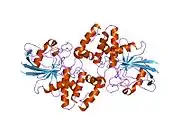| PTPRA | |||||||||||||||||||||||||||||||||||||||||||||||||||
|---|---|---|---|---|---|---|---|---|---|---|---|---|---|---|---|---|---|---|---|---|---|---|---|---|---|---|---|---|---|---|---|---|---|---|---|---|---|---|---|---|---|---|---|---|---|---|---|---|---|---|---|
 | |||||||||||||||||||||||||||||||||||||||||||||||||||
| |||||||||||||||||||||||||||||||||||||||||||||||||||
| Identifiers | |||||||||||||||||||||||||||||||||||||||||||||||||||
| Aliases | PTPRA, HEPTP, HLPR, HPTPA, HPTPalpha, LRP, PTPA, PTPRL2, R-PTP-alpha, RPTPA, protein tyrosine phosphatase, receptor type A, protein tyrosine phosphatase receptor type A | ||||||||||||||||||||||||||||||||||||||||||||||||||
| External IDs | OMIM: 176884 MGI: 97808 HomoloGene: 20621 GeneCards: PTPRA | ||||||||||||||||||||||||||||||||||||||||||||||||||
| |||||||||||||||||||||||||||||||||||||||||||||||||||
| |||||||||||||||||||||||||||||||||||||||||||||||||||
| |||||||||||||||||||||||||||||||||||||||||||||||||||
| |||||||||||||||||||||||||||||||||||||||||||||||||||
| |||||||||||||||||||||||||||||||||||||||||||||||||||
| Wikidata | |||||||||||||||||||||||||||||||||||||||||||||||||||
| |||||||||||||||||||||||||||||||||||||||||||||||||||
Receptor-type tyrosine-protein phosphatase alpha is an enzyme that in humans is encoded by the PTPRA gene.[5][6][7]
Function
The protein encoded by this gene is a member of the protein tyrosine phosphatase (PTP) family. PTPs are known to be signaling molecules that regulate a variety of cellular processes including cell growth, differentiation, mitotic cycle, and oncogenic transformation. This PTP contains an extracellular domain, a single transmembrane segment and two tandem intracytoplasmic catalytic domains, and thus represents a receptor-type PTP. This PTP has been shown to dephosphorylate and activate Src family tyrosine kinases,[8] and is implicated in the regulation of integrin signaling, cell adhesion and proliferation. Three alternatively spliced variants of this gene, which encode two distinct isoforms, have been reported.[7]
Interactions
PTPRA has been shown to interact with Grb2[9][10][11] and KCNA2.[12]
References
- 1 2 3 GRCh38: Ensembl release 89: ENSG00000132670 - Ensembl, May 2017
- 1 2 3 GRCm38: Ensembl release 89: ENSMUSG00000027303 - Ensembl, May 2017
- ↑ "Human PubMed Reference:". National Center for Biotechnology Information, U.S. National Library of Medicine.
- ↑ "Mouse PubMed Reference:". National Center for Biotechnology Information, U.S. National Library of Medicine.
- ↑ Jirik FR, Janzen NM, Melhado IG, Harder KW (December 1990). "Cloning and chromosomal assignment of a widely expressed human receptor-like protein-tyrosine phosphatase". FEBS Lett. 273 (1–2): 239–42. doi:10.1016/0014-5793(90)81094-5. PMID 2172030. S2CID 31501542.
- ↑ Kaplan R, Morse B, Huebner K, Croce C, Howk R, Ravera M, Ricca G, Jaye M, Schlessinger J (October 1990). "Cloning of three human tyrosine phosphatases reveals a multigene family of receptor-linked protein-tyrosine-phosphatases expressed in brain". Proc Natl Acad Sci U S A. 87 (18): 7000–4. Bibcode:1990PNAS...87.7000K. doi:10.1073/pnas.87.18.7000. PMC 54670. PMID 2169617.
- 1 2 "Entrez Gene: PTPRA protein tyrosine phosphatase, receptor type, A".
- ↑ den Hertog J, Pals CE, Peppelenbosch MP, Tertoolen LG, de Laat SW, Kruijer W (1993). "Receptor protein tyrosine phosphatase alpha activates pp60c-src and is involved in neuronal differentiation". EMBO Journal. 12 (10): 3789–98. doi:10.1002/j.1460-2075.1993.tb06057.x. PMC 413662. PMID 7691597.
- ↑ den Hertog J, Hunter T (June 1996). "Tight association of GRB2 with receptor protein-tyrosine phosphatase alpha is mediated by the SH2 and C-terminal SH3 domains". EMBO J. 15 (12): 3016–27. doi:10.1002/j.1460-2075.1996.tb00665.x. PMC 450243. PMID 8670803.
- ↑ den Hertog J, Tracy S, Hunter T (July 1994). "Phosphorylation of receptor protein-tyrosine phosphatase alpha on Tyr789, a binding site for the SH3-SH2-SH3 adaptor protein GRB-2 in vivo". EMBO J. 13 (13): 3020–32. doi:10.1002/j.1460-2075.1994.tb06601.x. PMC 395191. PMID 7518772.
- ↑ Zheng XM, Resnick RJ, Shalloway D (June 2002). "Mitotic activation of protein-tyrosine phosphatase alpha and regulation of its Src-mediated transforming activity by its sites of protein kinase C phosphorylation". J. Biol. Chem. 277 (24): 21922–9. doi:10.1074/jbc.M201394200. PMC 5641391. PMID 11923305.
- ↑ Tsai W, Morielli AD, Cachero TG, Peralta EG (January 1999). "Receptor protein tyrosine phosphatase alpha participates in the m1 muscarinic acetylcholine receptor-dependent regulation of Kv1.2 channel activity". EMBO J. 18 (1): 109–18. doi:10.1093/emboj/18.1.109. PMC 1171107. PMID 9878055.
Further reading
- Mustelin T, Hunter T (2002). "Meeting at mitosis: cell cycle-specific regulation of c-Src by RPTPalpha". Sci. STKE. 2002 (115): PE3. doi:10.1126/stke.2002.115.pe3. PMID 11796915. S2CID 1111167.
- Zheng XM, Wang Y, Pallen CJ (1992). "Cell transformation and activation of pp60c-src by overexpression of a protein tyrosine phosphatase". Nature. 359 (6393): 336–9. Bibcode:1992Natur.359..336Z. doi:10.1038/359336a0. PMID 1383828. S2CID 1283722.
- Jirik FR, Anderson LL, Duncan AM (1992). "The human protein-tyrosine phosphatase PTP alpha/LRP gene (PTPA) is assigned to chromosome 20p13". Cytogenet. Cell Genet. 60 (2): 117–8. doi:10.1159/000133317. PMID 1611910.
- Rao VV, Löffler C, Sap J, Schlessinger J, Hansmann I (1992). "The gene for receptor-linked protein-tyrosine-phosphatase (PTPA) is assigned to human chromosome 20p12-pter by in situ hybridization (ISH and FISH)". Genomics. 13 (3): 906–7. doi:10.1016/0888-7543(92)90186-V. PMID 1639427.
- Sap J, D'Eustachio P, Givol D, Schlessinger J (1990). "Cloning and expression of a widely expressed receptor tyrosine phosphatase". Proc. Natl. Acad. Sci. U.S.A. 87 (16): 6112–6. Bibcode:1990PNAS...87.6112S. doi:10.1073/pnas.87.16.6112. PMC 54482. PMID 2166945.
- Krueger NX, Streuli M, Saito H (1990). "Structural diversity and evolution of human receptor-like protein tyrosine phosphatases". EMBO J. 9 (10): 3241–52. doi:10.1002/j.1460-2075.1990.tb07523.x. PMC 552056. PMID 2170109.
- Ohagi S, Nishi M, Steiner DF (1991). "Sequence of a cDNA encoding human LRP (leukocyte common antigen-related peptide)". Nucleic Acids Res. 18 (23): 7159. doi:10.1093/nar/18.23.7159. PMC 332805. PMID 2175890.
- den Hertog J, Tracy S, Hunter T (1994). "Phosphorylation of receptor protein-tyrosine phosphatase alpha on Tyr789, a binding site for the SH3-SH2-SH3 adaptor protein GRB-2 in vivo". EMBO J. 13 (13): 3020–32. doi:10.1002/j.1460-2075.1994.tb06601.x. PMC 395191. PMID 7518772.
- den Hertog J, Pals CE, Peppelenbosch MP, Tertoolen LG, de Laat SW, Kruijer W (1993). "Receptor protein tyrosine phosphatase alpha activates pp60c-src and is involved in neuronal differentiation". EMBO J. 12 (10): 3789–98. doi:10.1002/j.1460-2075.1993.tb06057.x. PMC 413662. PMID 7691597.
- Stover DR, Furet P, Lydon NB (1996). "Modulation of the SH2 binding specificity and kinase activity of Src by tyrosine phosphorylation within its SH2 domain". J. Biol. Chem. 271 (21): 12481–7. doi:10.1074/jbc.271.21.12481. PMID 8647855.
- den Hertog J, Hunter T (1996). "Tight association of GRB2 with receptor protein-tyrosine phosphatase alpha is mediated by the SH2 and C-terminal SH3 domains". EMBO J. 15 (12): 3016–27. doi:10.1002/j.1460-2075.1996.tb00665.x. PMC 450243. PMID 8670803.
- Shimizu Y, Sugiyama H, Fujii Y, Sasaki K, Inoue K, Ogawa H, Tamaki H, Miyake S, Oji Y, Soma T, Yamagami T, Hirata M, Ikeda K, Monden T, Kishimoto T (1997). "Lineage- and differentiation stage-specific expression of LSM-1 (LPAP), a possible substrate for CD45, in human hematopoietic cells". Am. J. Hematol. 54 (1): 1–11. doi:10.1002/(SICI)1096-8652(199701)54:1<1::AID-AJH1>3.0.CO;2-1. PMID 8980254. S2CID 36581335.
- Lim KL, Lai DS, Kalousek MB, Wang Y, Pallen CJ (1997). "Kinetic analysis of two closely related receptor-like protein-tyrosine-phosphatases, PTP alpha and PTP epsilon". Eur. J. Biochem. 245 (3): 693–700. doi:10.1111/j.1432-1033.1997.00693.x. PMID 9183007.
- Somani AK, Bignon JS, Mills GB, Siminovitch KA, Branch DR (1997). "Src kinase activity is regulated by the SHP-1 protein-tyrosine phosphatase". J. Biol. Chem. 272 (34): 21113–9. doi:10.1074/jbc.272.34.21113. PMID 9261115.
- Feito MJ, Bragardo M, Buonfiglio D, Bonissoni S, Bottarel F, Malavasi F, Dianzani U (1997). "gp 120s derived from four syncytium-inducing HIV-1 strains induce different patterns of CD4 association with lymphocyte surface molecules". Int. Immunol. 9 (8): 1141–7. doi:10.1093/intimm/9.8.1141. PMID 9263011.
- Norris K, Norris F, Kono DH, Vestergaard H, Pedersen O, Theofilopoulos AN, Møller NP (1997). "Expression of protein-tyrosine phosphatases in the major insulin target tissues". FEBS Lett. 415 (3): 243–8. doi:10.1016/S0014-5793(97)01133-2. PMID 9357975. S2CID 9414519.
- Bhandari V, Lim KL, Pallen CJ (1998). "Physical and functional interactions between receptor-like protein-tyrosine phosphatase alpha and p59fyn". J. Biol. Chem. 273 (15): 8691–8. doi:10.1074/jbc.273.15.8691. PMID 9535845.
- Harder KW, Moller NP, Peacock JW, Jirik FR (1998). "Protein-tyrosine phosphatase alpha regulates Src family kinases and alters cell-substratum adhesion". J. Biol. Chem. 273 (48): 31890–900. doi:10.1074/jbc.273.48.31890. PMID 9822658.





